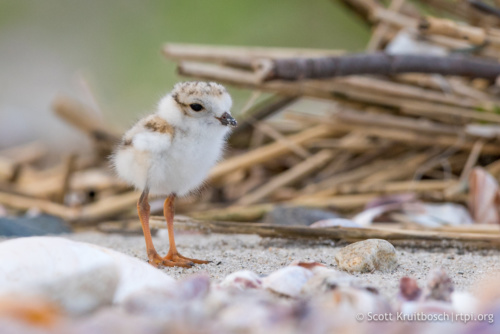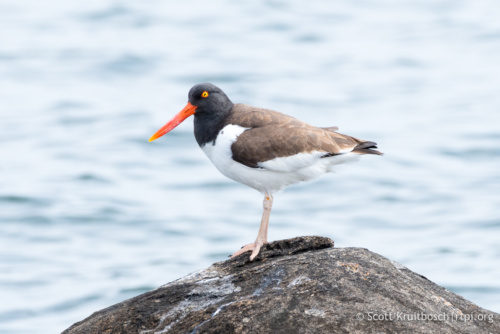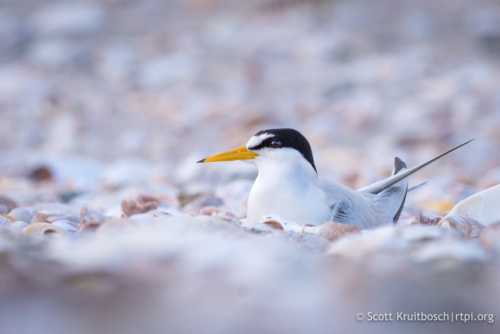Season recap reveals new details about where American Oystercatchers migrate, and historically low numbers for Least Terns.
November 19, 2019– Thanks to the efforts of almost 100 volunteers on Connecticut’s beaches, two of the state’s most vulnerable shorebirds had highly successful breeding seasons in 2019, reflecting a generally safer shoreline locally for federally and state-threatened birds.
The Audubon Alliance for Coastal Waterbirds announced that the 57 pairs of Piping Plovers that nested in the state fledged 1.72 chicks per pair, higher than the regional goal of 1.5 fledglings per nest along the Atlantic Flyway—a goal which, if it were sustained, would result in an increasing population.Seventy-four pairs of American Oystercatchers fledged 0.87 young per nest, a record high for Connecticut.

The plovers and oystercatchers nest only on beaches, which limits their nesting opportunities and leaves them vulnerable to various threats including dogs, predators like raccoons and foxes, and people who might not be aware that there are nests nearby. Piping Plovers are listed as a threatened species both federally and in Connecticut; oystercatchers are threatened in Connecticut.
The nesting success of the plovers and oystercatchers in 2019 was a direct result of the time and effort put in by the volunteers and staff of the Audubon Alliance. Ninety-three volunteers and 21 staff patrolled Connecticut’s beaches and monitored nests, the most in the nine years of the program.

The years of observations by Alliance volunteers and staff show that the highest concentrations of Piping Plover nests can generally be found at Long Beach in Stratford-Bridgeport; at the Milford Point Coastal Center in Milford and Sandy Point in West Haven; and at Griswold Point in Old Lyme and Bluff Point in Stonington. American Oystercatchers often nested on the same beaches as the plovers but also found nest sites on numerous islands in Long Island Sound.
Unfortunately, despite the increased effort by the alliance, Least Terns, another threatened species, saw historic lows, at 0.28 fledglings per pair. The terns face various threats, including an increase in predators, rising tides that might wash out their nests and, because they nest during the height of beach season in July, more human disturbance than other shorebirds.

Helping federally and state-threatened birds nest and raise chicks on our state’s beaches requires a community-wide effort. Shorebird nesting season is successful because of local people who volunteer to educate and engage with beach-goers each summer, as well as efforts by beach-goers themselves to “share the shore” by keeping a safe distance from nests and chicks.
The Audubon Alliance consists of Audubon Connecticut (a state office of the National Audubon Society), the Connecticut Audubon Society, the Roger Tory Peterson Institute of Natural History, and the State of Connecticut Department of Energy and Environmental Protection. The Alliance trains and coordinates a cadre of volunteer beach stewards who work with state and federal agencies to monitor nesting coastal birds and educate the public about the species found in and around the Long Island Sound. Most of the Alliance’s work concentrates on Piping Plovers, American Oystercatchers, and Least Terns.
Want to volunteer to help nesting shorebirds next year? Interested in participating in shorebird surveys? Email ctwaterbirds@gmail.com for more information, to sign-up, or to ask us a question.












